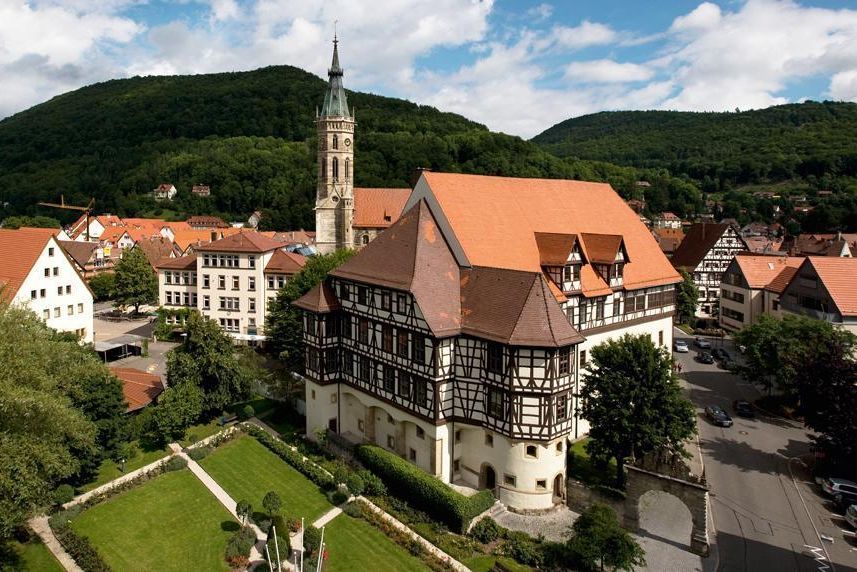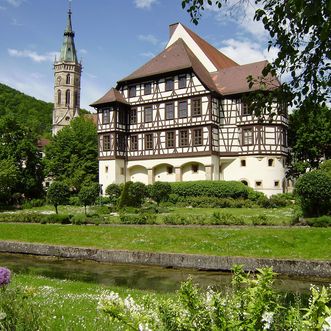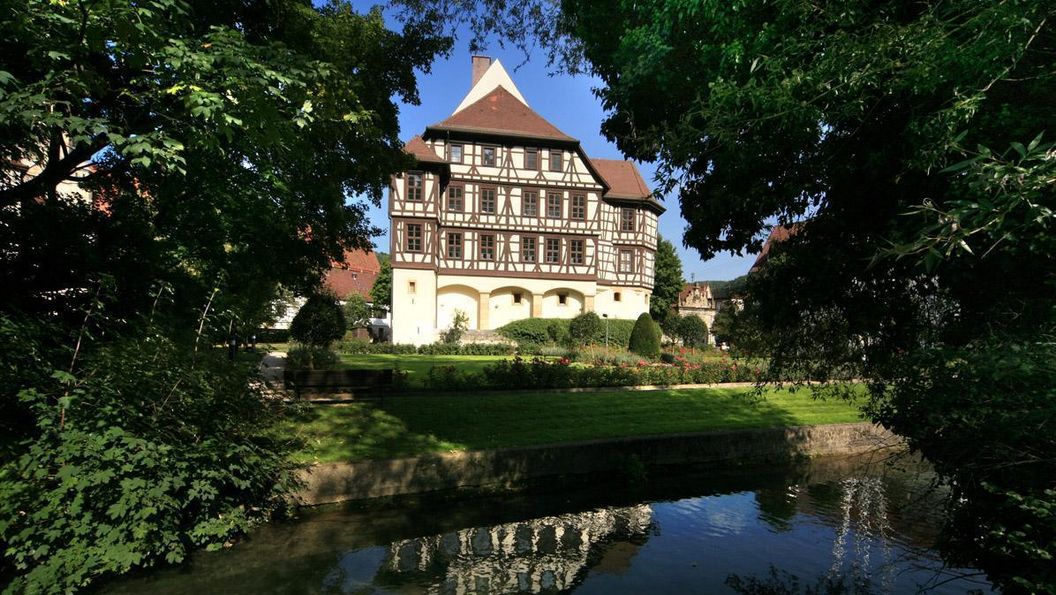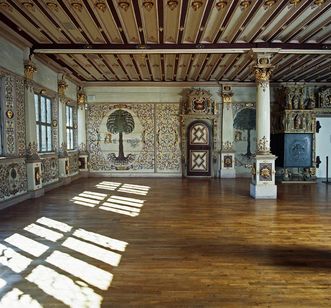The Medieval moated castle
In the 11th century, the Counts of Urach erected a moated castle on one of the peninsulas in the Erms river, which later came to be known as “Old Castle” or “Little Water Palace.” Only a few images give a blurry impression of its appearance; however, floor plans from the 18th century have survived. In the 14th century, Count Eberhard III celebrated his wedding to his Italian bride, Antonia Visconti. The later owners of Urach, the Counts of Württemberg, rarely used the moated castle. It was eventually torn down in 1789.






